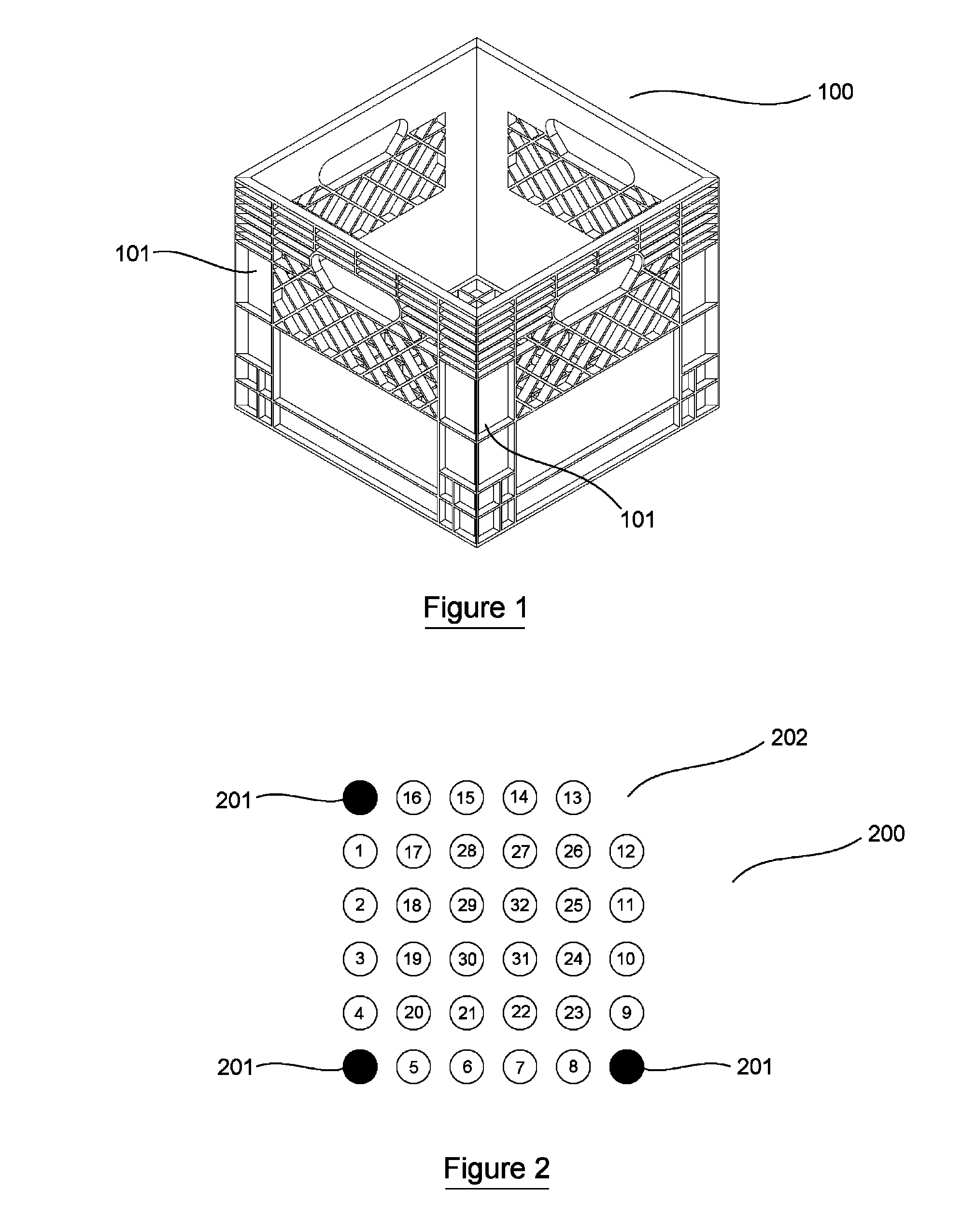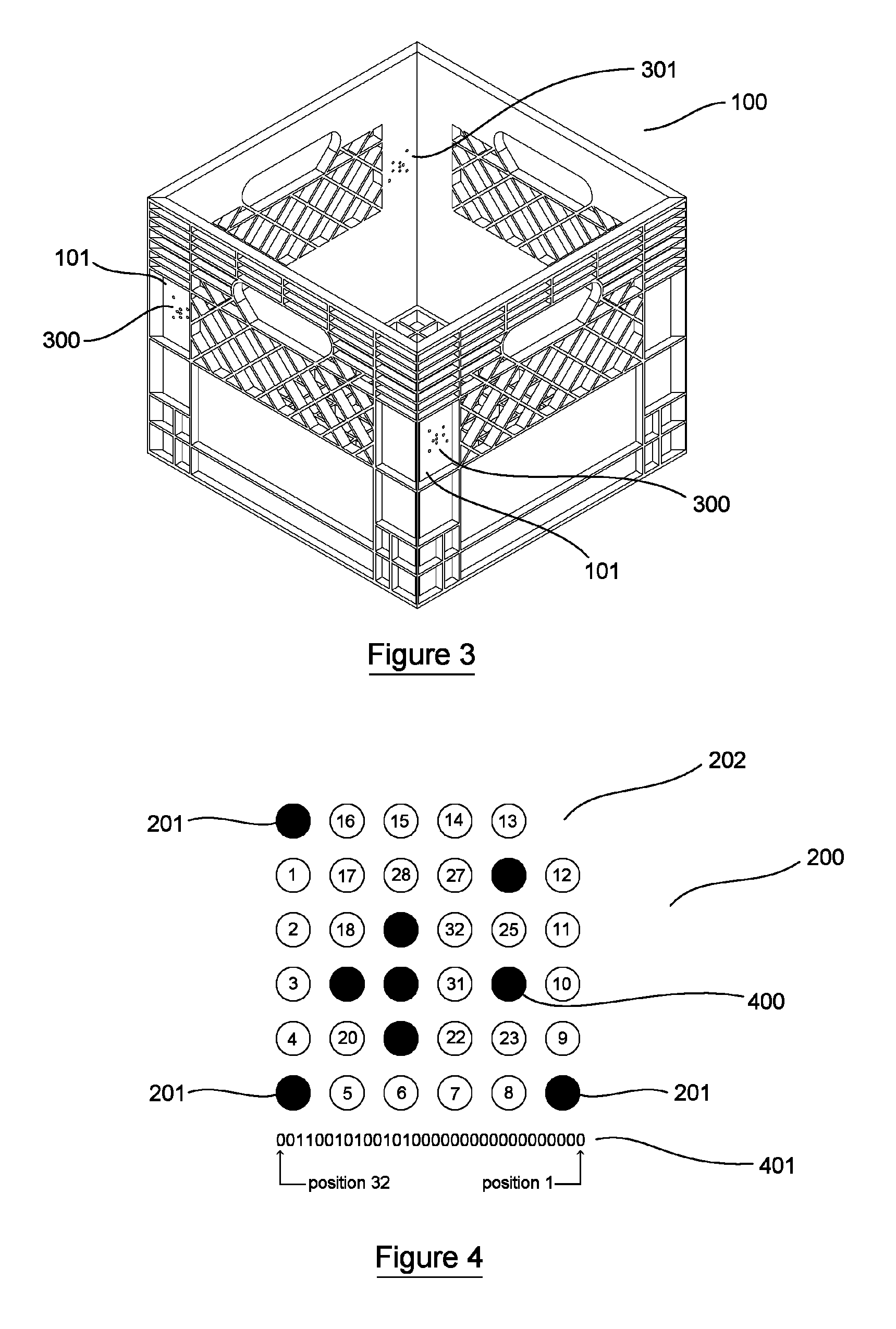Method and system for identifying and tracking reusable packing crates
a technology for identifying and tracking reusable packaging, applied in the direction of sustainable packaging industry, sustainable manufacturing/processing, instruments, etc., can solve the problems of inability to direct reuse of cardboard boxes, difficulty in marking the same packing crates, physical restrictions of existing marking technologies, etc., to eliminate all material costs
- Summary
- Abstract
- Description
- Claims
- Application Information
AI Technical Summary
Benefits of technology
Problems solved by technology
Method used
Image
Examples
Embodiment Construction
[0033]The following is a detailed description of the embodiments of a method and system for identifying and tracking reusable packing crates, as shown in the attached Figures. Wherever possible, the same reference numbers shall be used throughout to refer to the same or similar elements.
[0034]FIG. 1 illustrates a typical plastic reusable packing crate 100. In this illustrated embodiment, packing crate 100 can comprise the industry dimensional standard as used in the milk industry. It is known by those skilled in the art that crates from different manufacturers may differ slightly in structural layout of the side and bottom panels as required or desired in any particular industry, but the spirit of the crate design remains constant. It is further known by those skilled in the art that methods and systems described herein can be used in any industry where products can be stored, carted or distributed in a reusable packing crate, and that such methods and systems are not limited for us...
PUM
 Login to View More
Login to View More Abstract
Description
Claims
Application Information
 Login to View More
Login to View More - R&D
- Intellectual Property
- Life Sciences
- Materials
- Tech Scout
- Unparalleled Data Quality
- Higher Quality Content
- 60% Fewer Hallucinations
Browse by: Latest US Patents, China's latest patents, Technical Efficacy Thesaurus, Application Domain, Technology Topic, Popular Technical Reports.
© 2025 PatSnap. All rights reserved.Legal|Privacy policy|Modern Slavery Act Transparency Statement|Sitemap|About US| Contact US: help@patsnap.com



